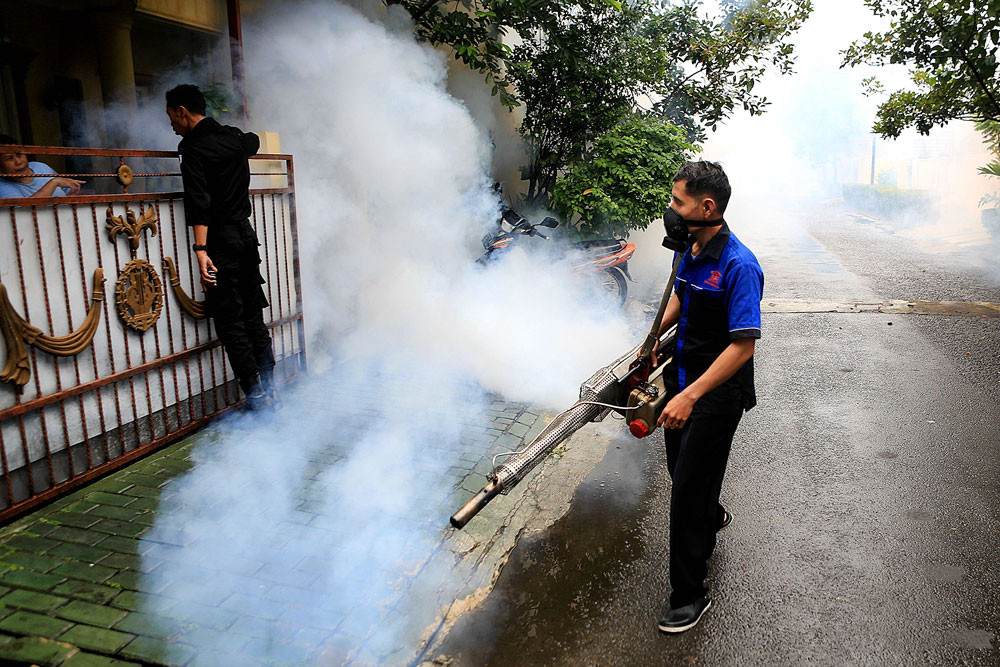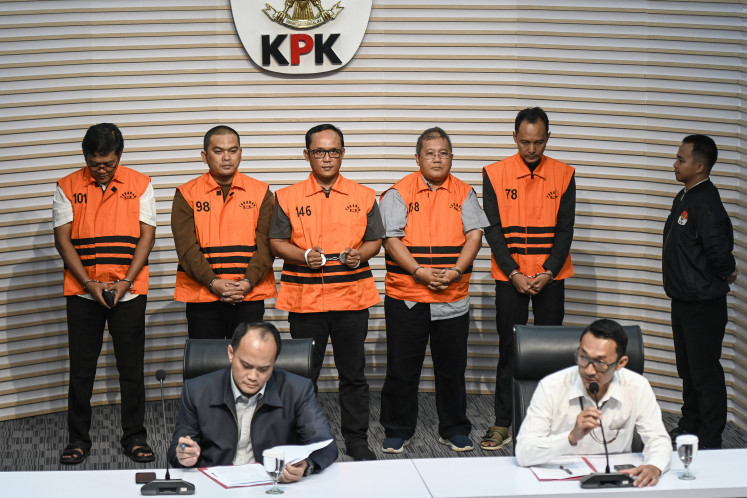Popular Reads
Top Results
Can't find what you're looking for?
View all search resultsPopular Reads
Top Results
Can't find what you're looking for?
View all search resultsManaging climate risks for early warning system on epidemics
Knowledge of climate patterns may help health workers to recognize the prevalence of diseases like malaria and dengue. In Indonesia, the outbreak period mostly occurs during the wet season from October to March and peaks in January to February.
Change text size
Gift Premium Articles
to Anyone
D
espite more use of climate data in the public health sector, more efforts are still required to control climate-sensitive diseases. Climate information would be better taken into account if it could be used effectively to improve public health services in a bid to prevent certain epidemics. Prevention efforts would include detection, by monitoring and predicting epidemics that might lead to an early warning system; and control, by assessing the warning system’s impact on prevalent diseases in a given population. The main infectious and often fatal diseases in Indonesia which include malaria, yellow fever, dengue and cholera, are strongly associated with climate factors, e.g., rainfall, humidity, and temperature. The first three are transmitted by mosquitoes and the last by human waste and flies.
The relationship between climate and the epidemics occurs seasonally though their sensitivity to climate varies. Different seasonal patterns are detected, especially those with a short period of development. Understanding the incubation period of particular epidemics and their effects on climate would help health workers in determining when to deal with high incidence or outbreak of the diseases.
Knowledge of climate patterns may help health workers to recognize the prevalence of diseases like malaria and dengue. In Indonesia, the outbreak period mostly occurs during the wet season from October to March and peaks in January to February. Thus, a climate-based early warning system is essential to address such problems.
Recently, early warning models on health have become available mostly regarding outbreaks of epidemic diseases, but not many are easy to use. In the case of Indonesia, a newly established early warning model, referred to NEWMs, has been developed by scientists of the Bogor Institute of Agriculture (IPB University) for seasonal epidemics like dengue and malaria. It is easy to run and practical to predict the incident rate of the diseases and to determine the best fogging times for mosquito breeding sites.
The model is developed only based on climate information, for example average, minimum, and maximum temperature and rainfall. Nevertheless, lack of climate data basis to run NEWMs remains among the greatest challenges in Indonesia. Meteorological stations are still rare and not located in the outbreak areas.
Thus, it is necessary to provide easy access of climate information by developing a model with a good forecast capability in specific study sites. A numerical weather prediction (NWP) model can be employed to address the issues. The NWP is a physics-based dynamical model developed in the United States, which resolution can be set down to 1 kilometer or even less.
The model can also be performed for long-term climate simulation under numerous boundary conditions; in this case, it would focus on a seasonal climate forecasting.
Other approaches to obtain climate information include statistical-based climate forecasting tool such as the Climate Predictability Tool (CPT) or bioclimate statistical gridded data which are freely accessible at WorldClim-Global Climate Data webpage with very high resolution.
The other credible sources to fill the data gaps over certain areas can be retrieved through a climate generator (CLIMGEN) produced using a stochastic spreadsheet. This recently developed method, is a powerful tool to generate a forecasting chart which shows all possible output values. For instance a stochastic spreadsheet is applied to NEWMs for forecasting future incidents of epidemics and the necessary fogging schedules of dengue and malaria in Indonesia.
Hence scarcity of climate data would no longer remain a classical challenge to speed up NEWMs implementation for public health. Availability of climate-related as well as epidemic health information on climate-change risks on health could be better managed in Indonesia, reducing the nation’s vulnerability to epidemic diseases impacted by climate change.
***
The writer is a Ph.D student at Applied Climatology, Graduate School of the Bogor Institute of Agriculture (IPB University).










